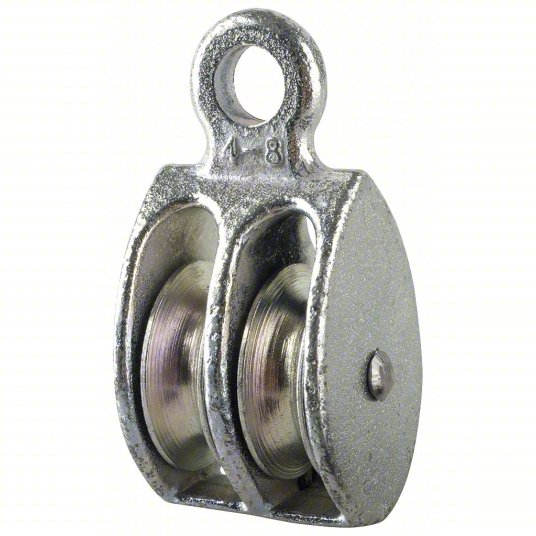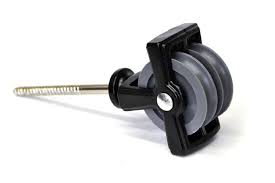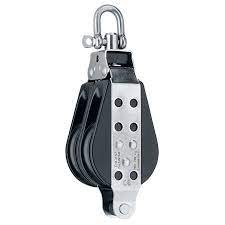Product Description
| Product Name | V-Belt Pulley |
| Groove Number | 1-10 Groove |
| Belt Type | SPZ SPA CHINAMFG SPC |
| Bore Type | Standard, Set Screw, Bearing, Keyway, Taper Lock Bush |
| Surface treatment | Anodize, Zinc Plate, Phosphate, Black Oxide, Paint, Passivate |
| Material | GG25 Cast Iron, Steel, Aluminum |
| Place of Origin | ZheJiang , China |
MIGHTY manufacture different types pulleys as follows:
1) European standard:
a) V-belt pulleys for taper bushings: SPZ, SPA, SPB, SPC; up to 10 grooves
b) Adjustable speed V-belt pulleys and variable speed pulleys
c) Flat belt pulleys and conveyor belt pulleys
2) American standard:
a) Sheaves for taper bushings: 3V, 5V, 8V
b) Sheaves for QD bushings: 3V, 5V, 8V
c) Sheaves for split taper bushings: 3V, 5V, 8V
d) Sheaves for 3L, 4L or A, and 5L or B belts: AK, AKH,2AK, 2AKH, BK, BKH,2BK, 2BKH, 3BK
e) Adjustable sheaves: poly V-pulley, multi-pitch H, L, J, K and M
Parts can be made according to drawings and/or samples, OEM service is welcomed
3) Bore type: pilot bore, finished bore, taper bore, bore for QD bushing
4) Surface finish: paint, phosphating, zinc plated
5) Material: cast iron, ductile iron, nylon, aluminum
6) Made according to drawings and/or samples, OEM inquiries welcome
/* January 22, 2571 19:08:37 */!function(){function s(e,r){var a,o={};try{e&&e.split(“,”).forEach(function(e,t){e&&(a=e.match(/(.*?):(.*)$/))&&1
| Certification: | CE, ISO |
|---|---|
| Pulley Sizes: | Spz SPA Spb Spc |
| Manufacturing Process: | Forging,Casting |
| Material: | Cast Iron,Steel |
| Surface Treatment: | Phosphating |
| Application: | Chemical Industry, Grain Transport, Industrial Transmission,Textile Machinery |
| Samples: |
US$ 0.5/Piece
1 Piece(Min.Order) | |
|---|
| Customization: |
Available
| Customized Request |
|---|
What are some real-world examples of double pulley applications in various industries?
Double pulleys find applications in a wide range of industries due to their versatility and mechanical advantage. Here are some real-world examples of double pulley applications in various industries:
1. Construction Industry:
– Double pulleys are commonly used in the construction industry for lifting heavy materials and equipment. They are employed in crane systems, hoists, and rigging setups to enhance lifting capacity and efficiency. Double pulleys allow construction workers to move large loads with reduced effort and provide directional control for precise positioning of materials during construction projects.
2. Search and Rescue Operations:
– In search and rescue operations, double pulleys are integral to various rigging systems. They are used in highline systems, rope rescue systems, and hauling systems to lift and lower injured individuals, transport equipment, and traverse challenging terrain. Double pulleys provide mechanical advantage, load distribution, and directional control, enabling rescuers to perform complex operations efficiently and safely.
3. Mountaineering and Climbing:
– Double pulleys are extensively used in mountaineering and climbing scenarios. They are utilized in hauling systems, self-rescue setups, and ascending/descending systems. Double pulleys enable climbers to create mechanical advantage, manage rope efficiently, and change the direction of force during ascent or descent. They play a crucial role in enhancing safety and efficiency in challenging climbing environments.
4. Industrial Rigging:
– Industrial rigging operations, such as heavy machinery installation, require the use of double pulleys. They are employed in lifting systems, rigging configurations, and material handling setups. Double pulleys provide increased lifting power, load distribution, and precise control over the movement of heavy loads. Industrial rigging applications include shipbuilding, oil and gas industry, power plant maintenance, and other heavy-duty operations.
5. Entertainment and Events:
– In the entertainment and events industry, double pulleys are utilized for rigging lighting equipment, sound systems, and stage props. They allow for efficient vertical and horizontal movement of equipment, facilitating quick setup and adjustments during concerts, theater productions, and large-scale events. Double pulleys provide the necessary mechanical advantage to lift and position heavy equipment safely.
6. Arboriculture and Tree Care:
– Double pulleys play a vital role in arboriculture and tree care operations. They are used in tree climbing systems, rigging setups, and tree removal processes. Double pulleys enable arborists to lift and lower large tree limbs or trunks, safely control the descent of cut sections, and navigate complex tree structures. They provide mechanical advantage and directional control, making tree care operations more efficient and controlled.
7. Offshore and Maritime Operations:
– Double pulleys find applications in offshore and maritime operations, including ship maintenance, marine construction, and offshore platform installations. They are utilized in lifting systems, winches, and rigging configurations to handle heavy loads, position equipment, and perform maintenance tasks. Double pulleys provide the necessary mechanical advantage and load distribution for safe and efficient operations in challenging maritime environments.
8. Recreational Activities:
– Double pulleys are used in various recreational activities, such as zip-lining, rope courses, and backyard playground setups. They allow participants to traverse zip lines, navigate rope obstacles, and create fun and engaging play structures. Double pulleys provide mechanical advantage, efficient rope management, and directional control, ensuring enjoyable and safe recreational experiences.
These are just a few examples of how double pulleys are applied in various industries. Their versatility, mechanical advantage, and ability to provide load distribution and directional control make them indispensable tools in numerous applications, enhancing efficiency, safety, and productivity in a wide range of industries.
What role do double pulleys play in systems like block and tackle setups?
Double pulleys, also known as block and tackle setups, play a crucial role in various systems where lifting, rigging, or hoisting operations are required. Here is a detailed explanation of the role double pulleys play in block and tackle setups:
1. Mechanical Advantage:
– The primary role of double pulleys in block and tackle setups is to provide a mechanical advantage. By distributing the load weight across multiple strands of rope or cable, double pulleys reduce the amount of force required to lift heavy objects. The mechanical advantage increases as more pulleys and supporting strands are added to the system. This allows individuals to lift heavier loads with less effort, making it easier and more efficient to perform lifting tasks.
2. Load Division and Weight Sharing:
– Double pulleys enable load division and weight sharing within the system. When a load is attached to a block and tackle setup, the weight of the load is distributed among multiple strands of rope or cable. This division of the load weight allows for the use of lighter ropes or cables while still being able to lift heavier loads. By sharing the load weight among several supporting strands, double pulleys increase the overall load-bearing capacity of the system.
3. Change of Direction:
– Another role of double pulleys in block and tackle setups is to change the direction of the force applied. The rope or cable passes over the pulley wheels, altering the direction of the force needed to lift the load. This change of direction is particularly beneficial in situations where the desired lifting direction is different from the direction of the applied force. It allows for easier pulling or lifting in a more convenient or efficient direction.
4. Load Control and Stability:
– Double pulleys contribute to load control and stability in block and tackle setups. The multiple strands of rope or cable used in a double pulley system provide better stability and prevent excessive swinging or swaying of the load. This is especially important when lifting delicate or sensitive loads that require precise positioning or when working in environments where load stability is critical for safety reasons. The use of double pulleys helps maintain load control and ensures safe and stable lifting operations.
5. Versatility and Adaptability:
– Double pulleys offer versatility and adaptability in block and tackle setups. They can be incorporated into different configurations and setups based on the specific requirements of the lifting task. Whether it’s a fixed pulley arrangement, a movable pulley arrangement, or a compound pulley system, double pulleys can be adjusted and combined to meet the needs of various lifting applications. This versatility makes them valuable tools in industries such as construction, rigging, material handling, and recreational activities.
6. Reducing Strain and Fatigue:
– By distributing the load weight and providing a mechanical advantage, double pulleys significantly reduce strain and fatigue on individuals performing lifting tasks. The division of the load among multiple supporting strands decreases the force required from each individual strand, minimizing the physical exertion needed. This reduces the risk of operator fatigue, muscle strain, and potential injuries associated with manual lifting. Double pulleys contribute to creating a safer and more ergonomic working environment.
7. Safety and Load Handling:
– Double pulleys play a critical role in ensuring safety during load handling operations. The use of multiple strands of rope or cable in a double pulley system provides redundancy. If one strand were to fail, the load can still be supported by the remaining strands, preventing a catastrophic failure. This redundancy increases the overall safety of the system. Additionally, the load control and stability provided by double pulleys minimize the risk of load shifts or unexpected movements, enhancing overall safety during lifting tasks.
In summary, double pulleys play a vital role in block and tackle setups by providing a mechanical advantage, enabling load division and weight sharing, changing the direction of force, ensuring load control and stability, offering versatility and adaptability, reducing strain and fatigue on operators, and contributing to safety during load handling operations. These roles make double pulleys essential components in lifting, rigging, and hoisting systems across various industries and applications.
In which industries and applications are double pulleys commonly used?
Double pulleys, also known as block and tackle systems or two-sheave pulleys, find wide application across various industries and sectors. Their mechanical advantage and versatility make them suitable for numerous lifting, rigging, and hoisting tasks. Here is a detailed explanation of the industries and applications where double pulleys are commonly used:
1. Construction and Building Industry:
– Double pulleys are frequently utilized in the construction and building industry for lifting and moving heavy materials and equipment. They are employed in tasks such as hoisting construction materials to elevated levels, lifting scaffolding components, and positioning structural elements. Double pulleys enable construction workers to handle heavy loads more efficiently and reduce the physical strain associated with manual lifting.
2. Rigging and Sailing:
– In rigging applications, double pulleys are used to control and adjust the tension in ropes or cables. They are employed on sailboats and other sailing vessels for tasks like raising and lowering sails, adjusting rigging tension, and maneuvering heavy loads on board. Double pulleys provide mechanical advantage, allowing sailors to manage the forces involved in sailing operations effectively.
3. Entertainment and Stage Rigging:
– The entertainment industry extensively uses double pulleys in stage rigging and theatrical productions. They are employed for lifting and lowering stage props, scenery, lighting equipment, and audiovisual components. Double pulleys enable precise control over the movement of stage elements, ensuring smooth and safe transitions during performances and events.
4. Mining and Extraction:
– Double pulleys are utilized in mining and extraction operations for lifting and transporting heavy loads, such as ore, rocks, and equipment. They are commonly used in underground mines, open-pit mines, and quarrying sites. Double pulley systems help optimize the efficiency of material handling processes in mining operations.
5. Material Handling and Warehousing:
– In industries that involve material handling and warehousing, double pulleys are employed in various applications. They are used in overhead cranes, gantry cranes, and hoists for lifting and moving heavy pallets, containers, and machinery. Double pulleys facilitate efficient material flow and enable precise positioning of loads in warehouses and distribution centers.
6. Rescue and Emergency Services:
– Double pulleys play a vital role in rescue and emergency services, such as firefighting, search and rescue operations, and industrial emergency response. They are used for raising or lowering personnel, equipment, or victims in situations where conventional access methods are impractical or unsafe. Double pulleys provide a reliable and controlled means of vertical movement in challenging environments.
7. Recreational Activities:
– Double pulleys are utilized in recreational activities that involve rope systems, such as rock climbing, mountaineering, zip-lining, and rope courses. They are used for belaying, ascending, or descending ropes, providing mechanical advantage and facilitating safe and controlled movement in outdoor and adventure settings.
8. Automotive and Transportation:
– In the automotive and transportation industry, double pulleys are employed in vehicle recovery and towing operations. They assist in lifting and pulling vehicles that are stuck, disabled, or involved in accidents. Double pulleys enable towing operators to apply controlled forces while minimizing the risk of damage to the vehicles being recovered.
These are just a few examples of the industries and applications where double pulleys are commonly used. Their versatility, mechanical advantage, and ability to distribute loads efficiently make them valuable tools in various sectors that require lifting, rigging, or hoisting operations.
editor by CX
2024-03-28




